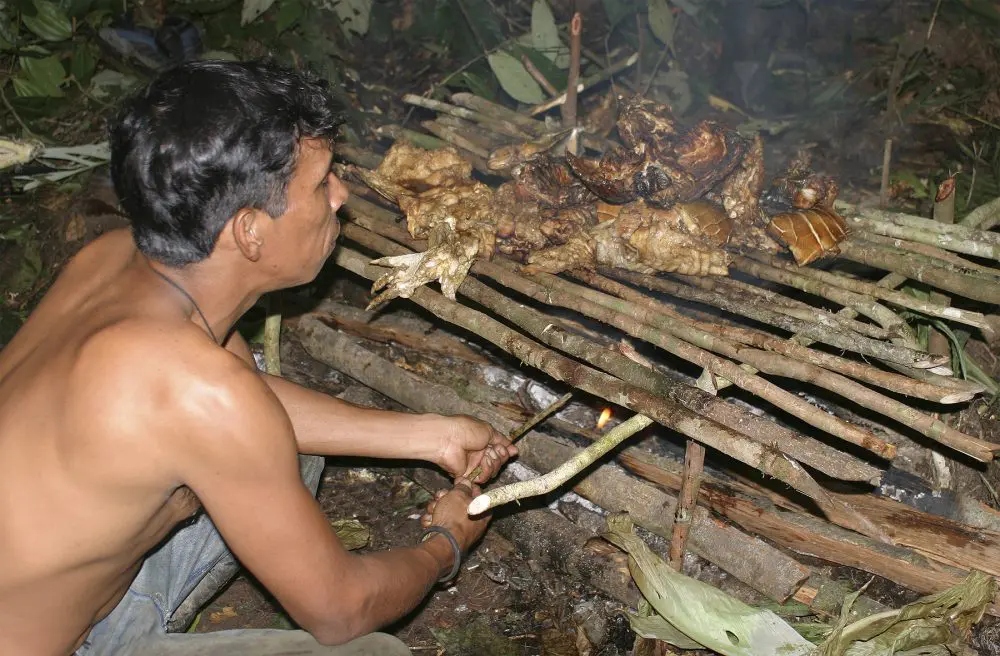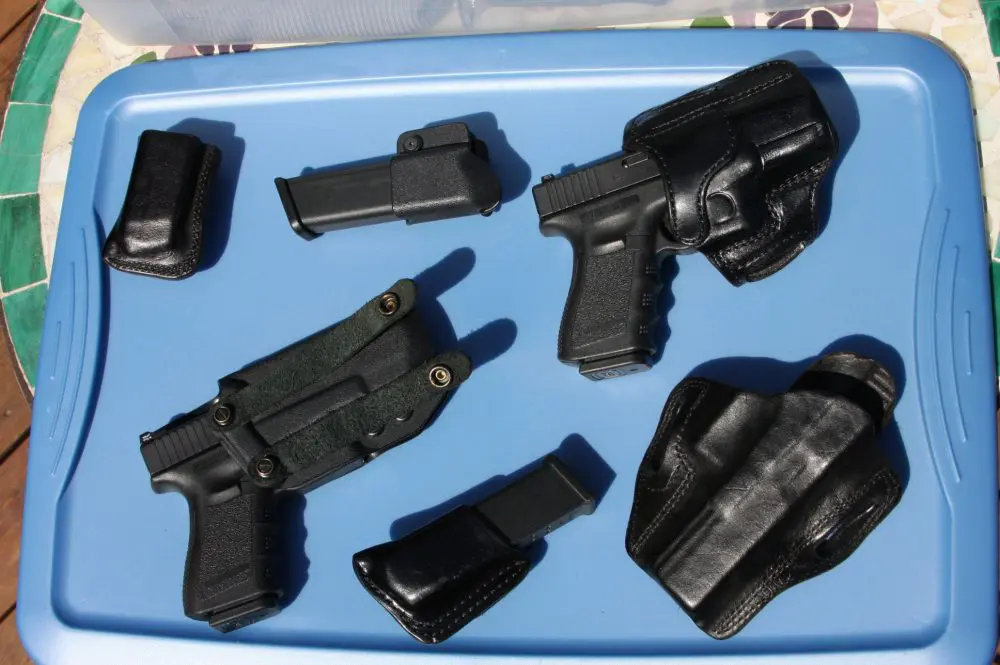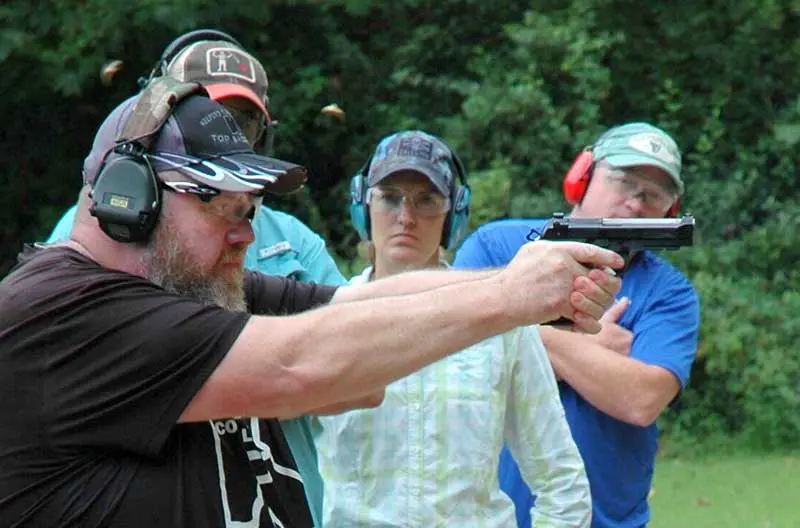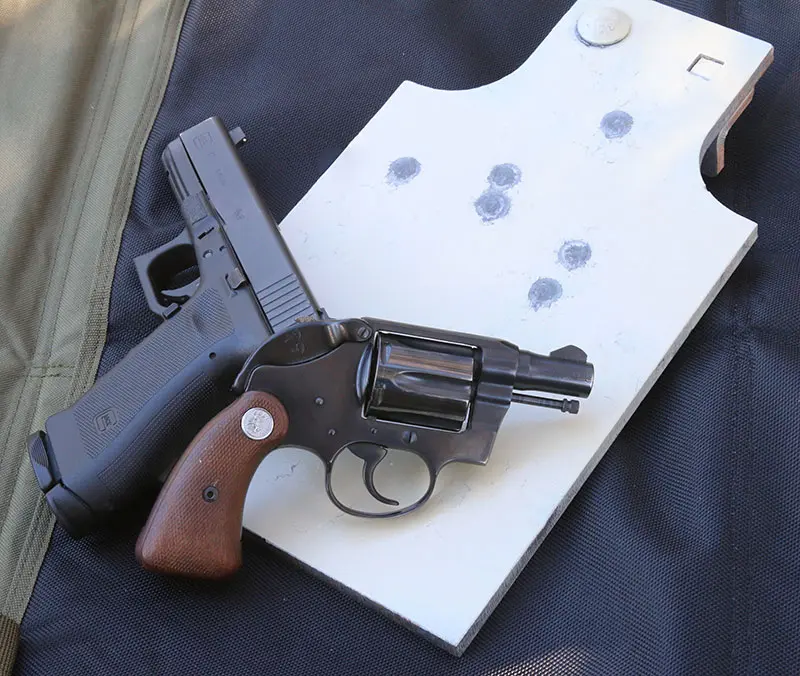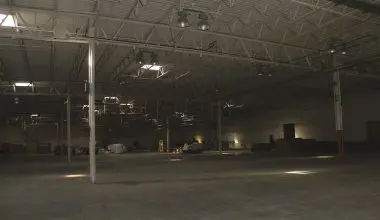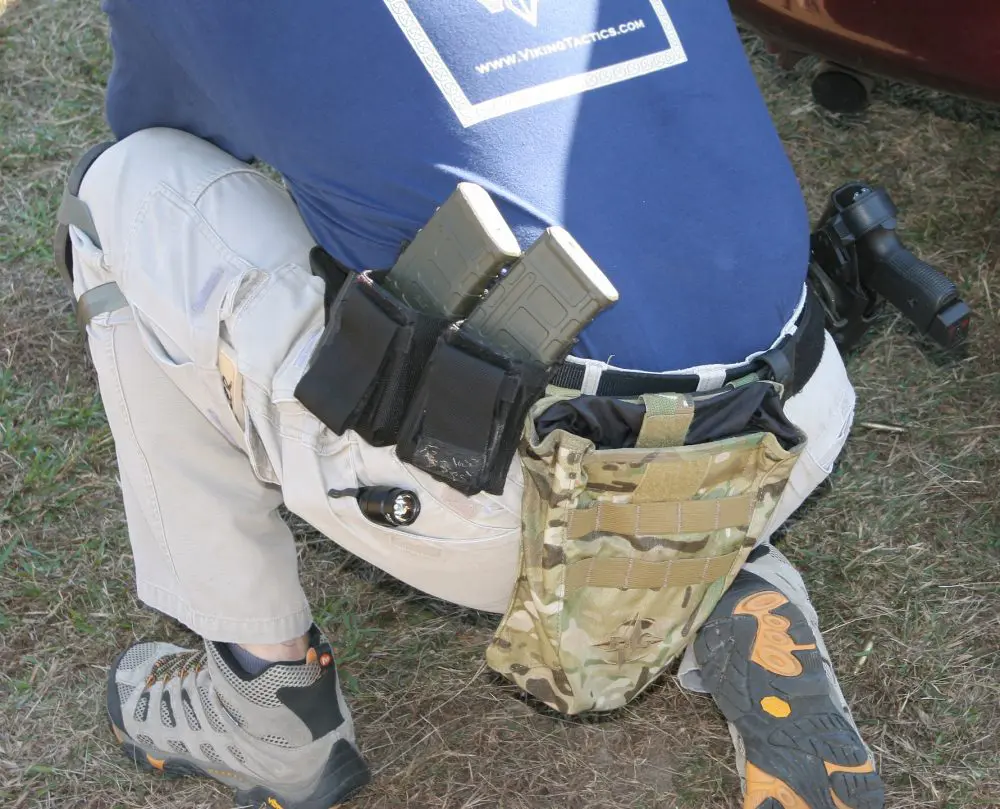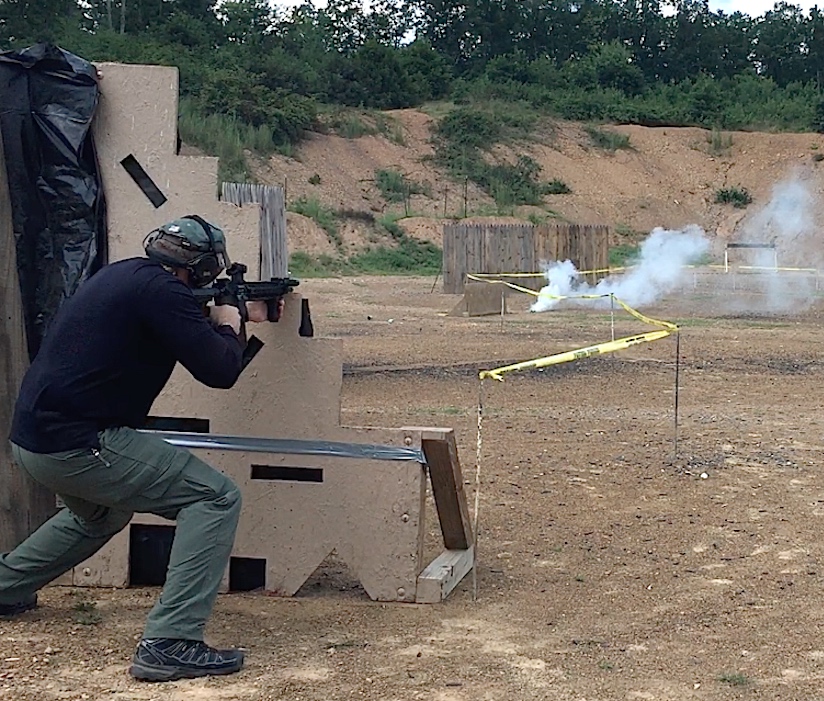
It’s one thing to hit a single, easily detected, close-range target in daylight with a single, moderately accurate shot, from a stable firing position, when not in a hurry. But change those conditions, presenting challenges common in defensive situations, and it’s a different proposition altogether.Late last year, eight skilled shooters with backgrounds in military, law enforcement, and/or shoot-and-move competitions such as 2-Gun, 3-Gun, IPSC/USPSA, and IDPA, participated in an experiment. The goal was to see how well different rifle sights, night vision devices, lasers, and weapon-mounted lights work when searching for and engaging multiple targets painted to match their surroundings throughout an AR-15’s point-blank range, with multiple precise shots from hasty firing positions while moving, against the clock.
For a professional perspective on the effort, the shooters included former Army Special Forces operator Mike Green, whose training company, Green Ops, has low-light and daytime courses among its rifle and pistol course offerings.
The experiment was conducted at the 2,000-acre Peacemaker National Training Center in Glengary, West Virginia, which hosts championship and monthly shooting competitions and training course.
During the day, the shooters shot several stages based on hypothetical urban and rural defensive scenarios, with iron, red dot, and telescopic sights. Unlike most shooting competitions, they were not shown the locations of the targets in advance.
At night, they shot two of the stages, alternately using flashlights and night vision devices, with and without laser pointer/illuminator devices.
Table of Contents
EQUIPMENT
Most of the ARs were mid-length gas-system Bravo Company Mfg carbines with 15-inch KeyMod handguards. The long handguard allows the front iron sight to be mounted farther forward, which sharpens the appearance of the target when focusing on the sight and vice versa. It also lets the support hand be farther forward for better aim and recoil control, with a flashlight and/or laser within easy reach.
The rifles were also equipped with Magpul MBUS Pro iron sights, Magpul 3rd Generation PMAGs, and Hornady ammunition loaded with flash retardant-enhanced powder—a significant benefit at night. SureFire SOCOM 2 suppressors were used on short-barreled uppers.
The shooters provided their own red dot and telescopic sights.
Nighttime equipment included SureFire Scout weaponlights, which can be adjusted to produce white or IR light by rotating the bezel; helmet-mounted AN/PVS-14 night-vision monoculars, Steiner DBAL-A3 and L3/Insight ATPIAL-C visible/IR laser devices provided by Tactical Night Vision Company; and white phosphorous AN/PVS-30 night-vision weapon sights provided by Knight’s Armament.
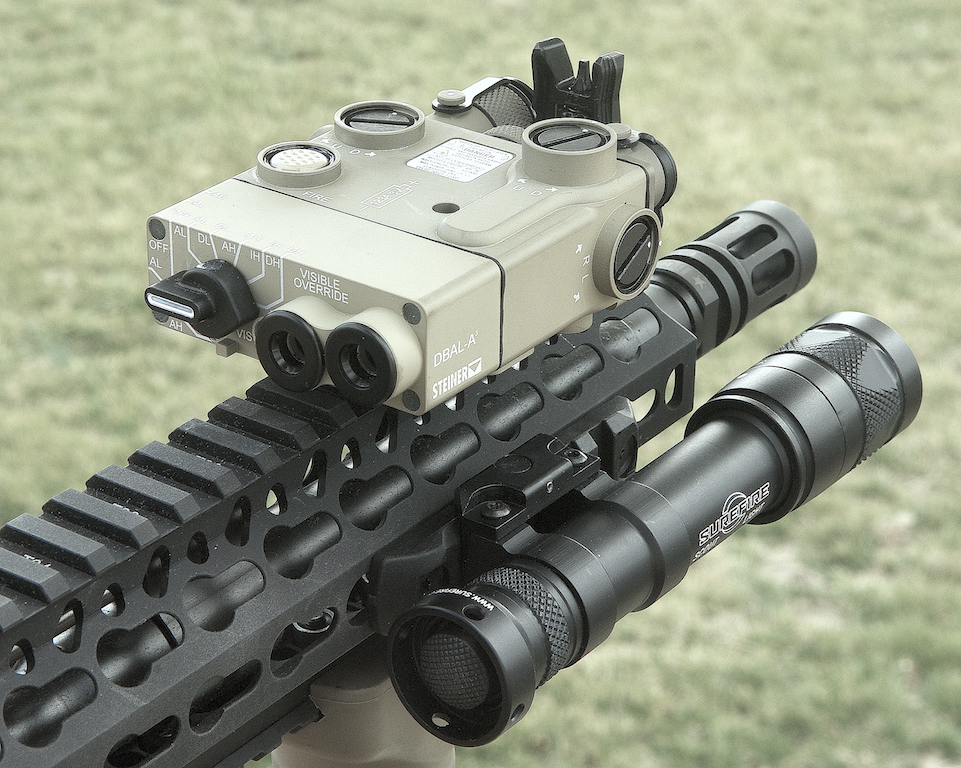
The cardboard targets were NDM-1 silhouettes, designed by the author and produced by National Target Company. The NDM-1’s height is compressed to represent an adversary hunched forward in a fighting stance. As a result, the eight-inch “A” Zone and four-inch “A+” Zone in the target’s torso are true center-mass aiming points, being symmetrical and vertically centered between the top and bottom of the target.
MGM steel targets were provided by Peacemaker National. Non-pyrotechnic Sport Smoke grenades obscured the “street” in the project’s second stage.
SCORING
Unless otherwise stipulated, two “A” Zone hits were required for the maximum score on each NDM-1. This differed from competitions in which a target is considered successfully engaged with two hits “anywhere on paper,” a formula that encourages people to shoot fast but might result in losing a gunfight.
By necessity, steel targets were scored on a hit/miss basis.
JUNGLE SCENARIO
Shooters moved down a 75-yard long trail in a densely wooded and foliated area. Nine NDM-1s, painted to blend with the surroundings, were placed at distances of five to 25 yards, left and right of the trail in fully and partially shadowed areas. Beyond the end of the trail were two steel silhouettes at 100 and 125 yards, also painted to match the foliage, spaced 30 degrees apart from the shooter’s perspective.
Despite the close range of the cardboard targets, it was difficult for shooters to locate them. But once the targets were spotted, the shooters’ accuracy and speed were superb, regardless of the type of sight used. Predictably, skill was more important than equipment.
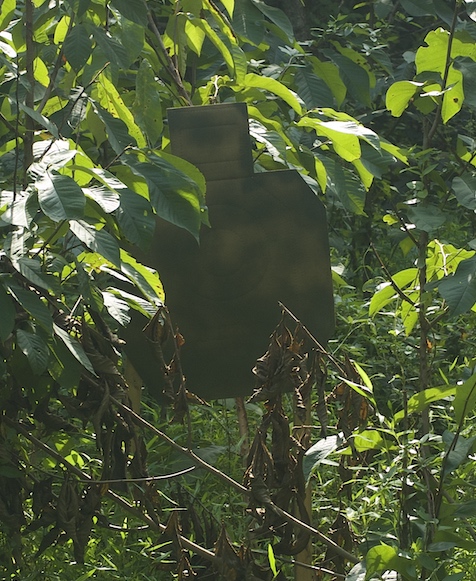
The steel targets were another story. They blended so well with their surroundings that they could not be seen with the naked eye. Only with the magnification of a telescopic sight could those targets be discerned.
URBAN SCENARIO
Shooters first engaged two steel plates at 50 yards from a VTAC (Viking Tactics) barricade—an apparatus developed by retired Army Special Forces Sergeant Major Kyle Lamb and widely used for training and competitions.
They then moved along a designated path to engage seven NDM-1s, bypassing three “no shoots.” The first two NDM-1s, at distances of three to five yards, required using holdover to compensate for sight-bore offset. Shooters handled this easily, regardless of the type of sight used.
Next came a situational awareness test. Because adversaries can appear on one’s flanks or position themselves to fire into a “kill zone” from multiple locations, the next three targets were placed left and right of the path, so the shooter might be exposed to them simultaneously if he wasn’t careful. Also, because adversaries don’t always appear at eye level, one of the targets was placed on the ground, at the end of a large plastic drainage pipe.
In all fairness to the shooters, they had been told to stay on the designated path and were inclined to keep moving because their scores depended in part upon their elapsed times. In the “real world,” they might have used the terrain differently, slowed down to detect traps, or used speed to overwhelm their adversaries. In any case, everyone was reminded that moving too quickly (or not quickly enough) can allow targets to see and engage you before you see them. As in the previous stage, once the targets were located, the type of sight used had little effect on shooter accuracy and speed.
HOME-DEFENSE SCENARIO
Shooters moved down a hallway, through two rooms and through a door into a third room, distinguishing between seven NDM-1s and three “no shoots.”
In memory of the late, highly regarded firearms instructor Pat Rogers, one target required a seven-shot, center-mass Non-Standard Response—a drill commonly practiced in Pat’s classes.
Though shooters were warned that, in addition to its hallway, rooms, and door, the “house” might contain other features, some shooters bypassed the first target, which was visible through an open window inside the hallway.
But all negotiated the tight spaces deftly, bypassed the no-shoots, had their selectors on SAFE when moving between targets, and shot with excellent accuracy and speed regardless of the type of sight used.
OPEN-TERRAIN SCENARIO
After engaging two NDM-1s at 10 and 20 yards, shooters moved behind a low barricade to engage a steel silhouette at 125 yards, with one shot each from standing, kneeling, and sitting positions.
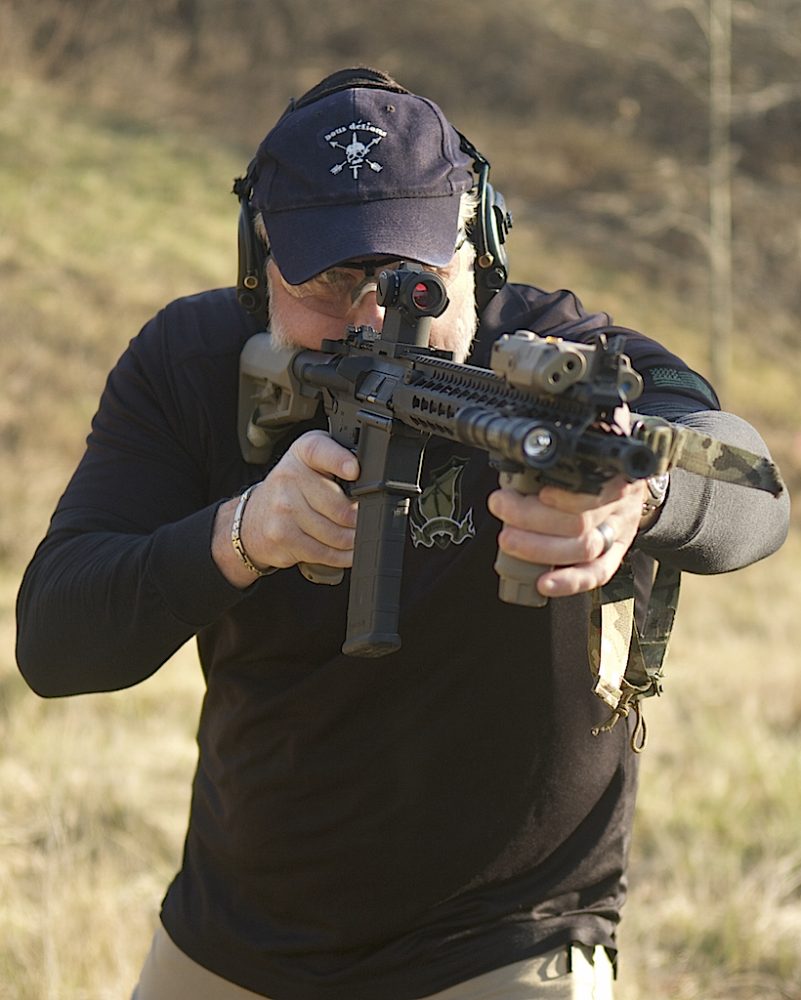
They then went prone to engage steel silhouettes at approximately 190, 330, and 380 yards. Those distances were selected because, with a 300-meter (328-yard) battle-sight zero, the bullet should rise to about seven inches above the line of sight at about 190 yards, and fall to about seven inches below the line of sight at a point-blank range of about 380 yards. (This depends on the ammunition, barrel length, ambient temperature, temperature of the cartridge when fired, and altitude above sea level.)
The 125-yard target was easy for all shooters, regardless of the type of sight used. Though painted to match its surroundings, it was well in front of the berm to its rear, thus readily observable. But the longer-range painted targets were only a short distance in front of their backdrops, making them more difficult to locate without the magnification of a telescopic sight. The 380-yard target was particularly difficult, even though lighting conditions were ideal.
NIGHT PHASE
The most common reason Americans have guns is for protection, and a significant percentage of violent crime takes place at night. Yet the vast majority of target practice takes place with daylight equipment in daylight conditions.
To explore how to address that deficiency, our shooters ran the home-defense stage with a conventional sight and a SureFire Scout weaponlight, then with a helmet-mounted AN/PVS-14 night-vision monocular. In both runs, they had the option of using a laser device.
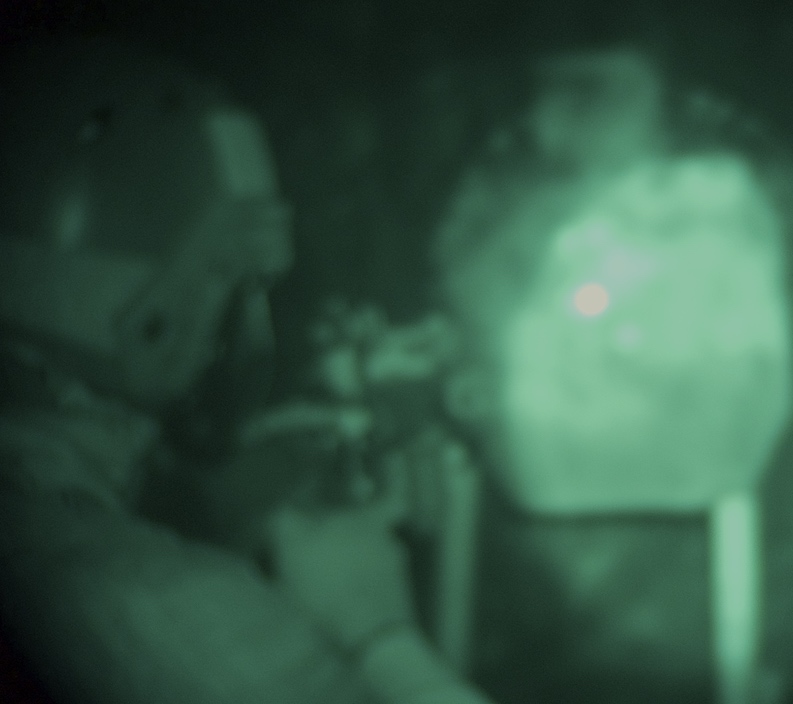
Shooters’ scores in this exercise tracked their familiarity with the equipment. While most people have experience with a flashlight, though not necessarily one mounted on a rifle nor one used in a tactical manner (for example, turning it on only momentarily as you move), people with military backgrounds tend to be more familiar with night-vision devices—a factor that narrowed the difference between their flashlight-only and night-vision-enhanced scores.Next shooters moved to the open-terrain stage, using a white phosphorous AN/PVS-30 in front of a telescopic sight, under a full moon and mostly cloudless sky. The 125-yard target was easy to see with the device, the 190- and 330-yard targets fairly so, but the painted 380-yard target—difficult to see during the day—was almost indiscernible at night. The AN/PVS-30 provided ample illumination and clarity. The problem was the very effective camouflaging of the target.
If there’s a conclusion to be drawn from our shooters’ trip to the range, it’s that professional training, serious practice, and top-notch equipment should increase your chance of prevailing in a defensive encounter, day or night.
That warrants consideration, because while the chance of the average person being attacked is fairly low, statistics don’t matter if it happens to you.

